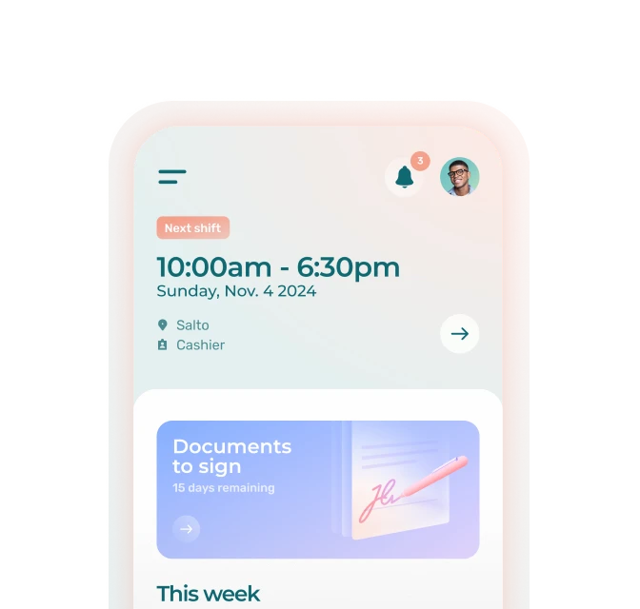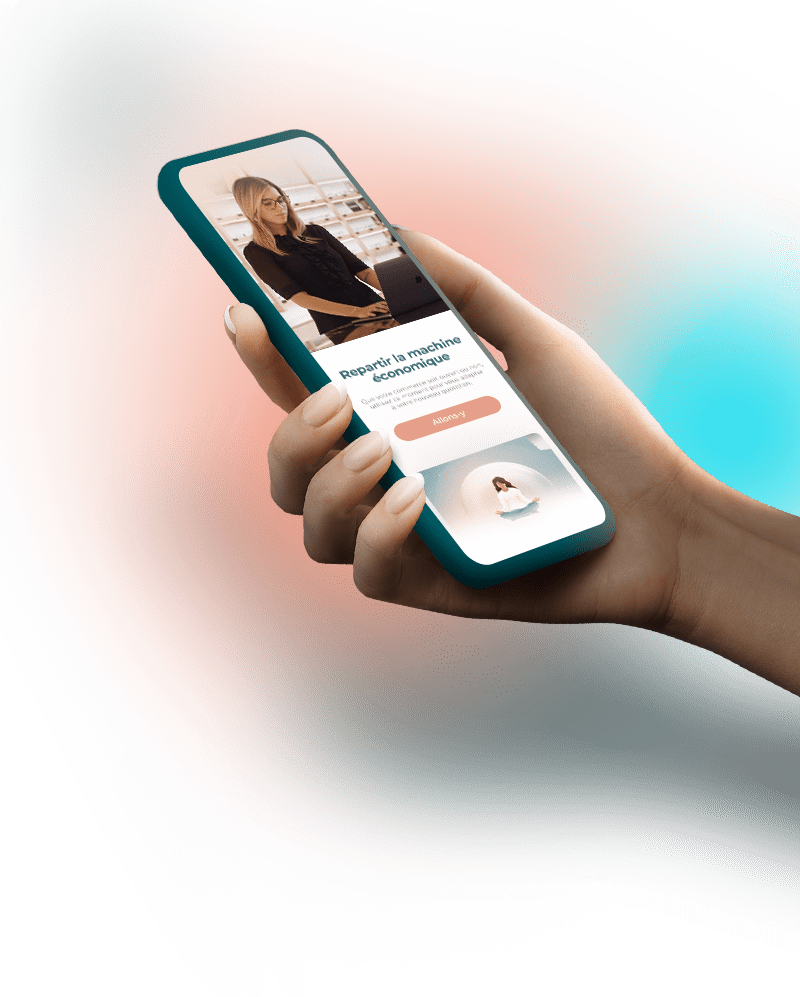6 Keys to Creating a Successful Employee Onboarding Process + Best Practices
Improving your employee onboarding process will make new hires more successful in their role, more engaged with their team, and more loyal to the organization.
What Is the Employee Onboarding Process?
Employee onboarding (also called organizational socialization), is the formal process of integrating a new hire into the organization. The process of fully onboarding employees can take several weeks to several months, and is intended to help new employees learn about the organization’s structure, its organizational culture, vision, mission and values. A good onboarding program improves employee engagement and loyalty, job satisfaction, employee productivity, and the overall employee experience.
What Is the Main Goal of Onboarding Employees?
Organizations devote a considerable amount of time and resources on onboarding employees, with two key goals in mind:
- Helping new hires acclimate to their new job and work environment.
- Helping new hires quickly develop a sense of belonging to the organization.
Whether you’re working with an on-site team or remote employees, having a good employee onboarding process will ensure that each new hire can start working productively in line with the organization’s strategic goals, mission, vision and values. It will also improve employee satisfaction.
The employee onboarding experience can vary from one business to the next. Many industries develop a semi-formal or formal onboarding process, including:
- Restaurants & bars
- Hotels & hospitality
- Offices & call centers
- Home care
- Security services
- Cities & municipalities
5 Main Phases of the Employee Onboarding Process
1. Pre-boarding
Employee pre-boarding essentially refers to all the steps of employee onboarding before the first day of work. This phase begins when the prospective employee accepts the job.
The employee pre-boarding phase has two main goals:
- Ensuring onboarding employees have everything they need to start day 1 of their new job.
- Keeping the employee excited about starting their new role (keep in mind that some new hires have more than one job offer on the table).
Employee pre-boarding best practices:
1. Tackle all new hire paperwork.
Ensure everything is ready for the new employee on day one. For HR professionals, this can include things like:
- Sending new hires benefits information, tax forms, and other essential company documents.
- Setting up their workspace.
- Ordering any special tools, equipment or uniforms they’ll need.
- Creating passwords, key cards and software accounts.
- Notifying stakeholders of the new hire’s name and role, as well as the start date, so that they can set aside time to properly welcome the new hire.
2. Send the new hire a welcome email.
Sending new hires an email with a welcome message is a great way to ease first-day jitters as well as any doubts. The email should be warm and friendly, and include key information for that first day:
- When to arrive
- Where to go
- What to bring
- If lunch will be provided
- Orientation schedule or invitations to introductory meetings with co-workers or onboarding sessions, etc.
The email can be sent by the hiring manager, the company founder or the CEO. It should also include the name and contact information of the go-to person in the event of any questions.
3. Don’t leave questions from onboarding employees unanswered.
Most new hires will have the same questions:
- What are the working hours?
- Where should I park?
- Which door should I enter by?
- Who do I see first?
- Is there an office canteen?
Creating an FAQ and including a link to this in your welcome email will be appreciated by new employees. It will also help to keep the email light.
4. Send new hires a welcome package.
Sending new hires a welcome package of company swag is a common practice in the onboarding process—and a fun perk that will get new team members excited about working for the company. Put some thought into your employee welcome package so that it reflects your organization and its culture.
Things to include in an employee welcome package:
- Employee handbook (company background, company policies and procedures)
- Company merchandise, like a reusable water bottle with company logo
- Office supplies
- Goodies (vouchers/coupons)
5. Invite new hires to a company event.
If your company hosts regular happy hours or other such events, invite new hires even before their first day. This can be a great way to introduce them to their colleagues and let them get acquainted with their work space in a more relaxed setting.
If you are hiring a cohort of new employees starting on the same day, set up a casual meet & greet beforehand. Seeing a few familiar faces when they show up for their first day on the job will help ease anxiety.
2. Onboarding & Welcoming
The employee onboarding & welcoming phase—often called employee orientation—starts on day one of the job. It typically includes a workplace tour and company information, including details of the new hire’s role and day-to-day tasks.
The goal of the employee onboarding and welcoming phase is to introduce new hires to each team member and individual roles. Depending on the size of the team and everyone’s work schedule, this can happen on day one or during the new hire’s first week.
It’s important during this phase to give new employees plenty of opportunities to ask questions.
Best practices for onboarding and welcoming new hires:
- Make the first day exciting
- Reflect your culture
- Get senior leaders involved
- Assign a buddy or mentor
- Use job shadowing
- Set initial expectations
3. Training
Behind every high performing company is a well-trained team working together toward a shared goal.
The goal of the employee training phase is to ensure employees know how to effectively do their jobs within their team.
Best practices for new employee training:
- Create an employee training agenda.
- Add training shifts to the schedule for your team members (if applicable).
- Embrace employee training digital tools.
- Cater to different learning styles.
- Use positive reinforcement.
- Solicit employee feedback to improve employee training and team processes.
4. Transitioning to Role
When employees are confident in their ability to perform daily tasks, they are ready to start integrating fully into their role. This phase usually happens in the first few months of employment—right when employee churn is most likely to occur.
The goal of the employee transitioning-to-role phase is therefore to ensure employee retention. It’s crucial to nurture employee development at this stage and give new hires the tools and support they need to succeed.
Best practices for the transitioning to role phase:
- Set new hires up for mentoring and initial performance reviews so that they can learn and grow.
- Provide employees with target metrics and performance goals that they can work towards to stay challenged and motivated.
- Plan one-on-one meetings with the employee and manager to discuss achievements, challenges, future goals and current needs.
5. Development & Growth
By now, new employees are most likely fully integrated into their role—meeting or working toward performance goals. They may now be ready to take on new challenges, or even start being groomed to eventually take on a more advanced role.
The main goal of the employee mentoring & growth phase is to ensure the employee’s long-term commitment to the company values and the organization.
Best practices for the employee development & growth phase:
- Continue to provide new hires with ongoing support and development—for several months to a year or more.
- Invest in skills development training for the employee to keep them motivated and engaged.
- Offer team and relationship building exercises to carry individual performance over to team performance.
How to Create a Successful Onboarding Program
1. Determine Your Employee Onboarding Goal
Good employee onboarding programs do more than simply ensure new hires are adequately prepared to do their job. They have a more strategic goal:
To ensure all employees understand and embrace the company’s values and mission so they remain excited about their role and committed to bringing the entire company’s vision to life.
Best practices for creating your employee onboarding goal.
1. Create a measurable goal. This could be:
- Decreasing the amount of time it currently takes to get new hires fully integrated and productive by 20%.
- Increasing the percentage of employees who say they see themselves working at the company in 5 years by 15%.
2. Make sure the onboarding program covers the 5 “C’s” of onboarding: Compliance, Clarification, Confidence, Connection, and Culture.
2. Create an Employee Onboarding Team
Determining who should be on your employee onboarding team is crucial for effective onboarding. This will depend on the size and structure of your company, but also the role of the new hire.
Best practices for creating a strong employee onboarding team:
1. Bring together all factions of your business: HR, Learning & Development, Training, Managers, etc.
2. Be sure to include on the team:
- Hiring managers who are strong advocates of the organization’s culture and who are able to communicate company policies and the company’s mission.
- HR managers familiar with the onboarding platform.
- Existing employees familiar with the onboarding process, organizational culture, etc.
3. Include a “work buddy” the new employee can reach out to. Avoid choosing direct managers as buddies; instead, choose someone at the same level on their team or even on another team. That person will be the new employee’s first go-to resource for any questions regarding tasks, HR matters like requesting time off, etc.
4. Involve the new employee’s whole team to split up tasks such as training, presenting work processes and tools, sharing team objectives, etc.
3. Use Employee Onboarding Software
The right employee onboarding software will simplify your onboarding process and eliminate the oversights that can jeopardize a new hire’s successful integration.
Best practices for choosing employee onboarding software:
- Ease of use. It should be user-friendly and make onboarding new employees easy.
- Automated processes and workflows. It should let you automate certain processes or workflows so that you can save time and ensure a consistent onboarding experience. It should also let you document and centralize employee records.
- Personalized options. It should let you personalize certain aspects of automated processes and workflows so that the onboarding process still feels special and tailored to the new hire.
- Self-service features. It should include self-service features that let new hires find information with ease.
- Culture and engagement features. It should include enough flexibility to bring your company culture to life—such as through employee surveys, peer recognition and internal communication.
4. Map Your Employee Onboarding Process
Creating an employee onboarding process flow chart can be a smart way to visualize at a glance all of the phases of your onboarding program, including the main steps of each phase.
You can also create an employee onboarding checklist to ensure all new hires enjoy the same great onboarding experience.
Best practices for creating an employee onboarding process checklist:
Pre-boarding Phase Checklist:
- Send a message to the new employee.
- Send HR paperwork to the new employee
- Send a communication to other employees & key team members stakeholders.
- Prepare the workspace and equipment for the new employee.
First Day Onboarding Checklist:
- Hold a welcome coffee and workplace tour.
- Set up the new employee’s workstation and equipment.
- Finalize HR paperwork.
- Set up a team lunch.
- Have the employee meet the site manager.
- Have the employee meet their new manager.
First Week Onboarding Checklist:
- Check in daily with the new employee.
- Schedule regular 1:1 meetings with the new employee.
- Schedule times to introduce the new employee to the different teams.
- Schedule training on work tools (equipment, IT software, etc.).
- Recommend useful resources or reading.
- Organize social activities to help the new employee get to know other team members.
- Invite the new employee to ask questions or provide feedback.
First, Third and Sixth Month Onboarding Checklist:
- Have the new employee fill out the onboarding survey to gather feedback.
- Conduct an employee progress review.
- Providing any additional relevant training material or sessions.
- Organize social activities to solidify the new employee within the team.
- Invite the new employee to ask questions or provide feedback.
5. Create an Onboarding Course
Creating an employee onboarding course can be a good way to provide new employees role-based training.
Best practices for creating an effective onboarding course:
- Create courses for all positions in the business—store clerk, cashier, assistant manager, etc. You can even use these courses when promoting internal mobility.
- If you are creating specific company-wide courses, add them to your training curriculum. For example at Agendrix, data security is the responsibility of all staff. Every hire—even interns— must take the course and pass the test.
- Making your onboarding training more appealing. Gamify your training courses or add an element of fun by rewarding employees when they have completed all their courses—such as company merch, a free meal, etc.
6. Improve Your Onboarding Process
Like all business processes, the HR team should regularly review your employee onboarding process and improve it over time to ensure it is achieving its goals.
Best practices for improving your employee onboarding process:
- Actively seek feedback from new employees during their first weeks and months of employment to pinpoint what you’re doing well and where you can improve.
- Measure key performance indicators such as employee retention rates and internal promotions to ensure a good onboarding process that supports organizational goals.
- Reassess your entire process as the organization evolves. Any major cultural or structural changes might warrant a complete program overhaul.
- Don’t overlook how your hiring process influences the new employee onboarding experience.
6 Most Common Mistakes During the Employee Onboarding Process
- Zero entry-level training
- Overloading new hires
- No pre-boarding
- Unstructured onboarding
- Unclear goals and expectations
- No feedback loop
Conclusion
According to a 2020 report, employees who had a negative onboarding experience are twice as likely to seek employment elsewhere. For organizations in the U.S. that can add up to roughly $15,000 per employee lost.
Effective employee onboarding practices like the ones described above are essential for keeping new hires happy and productive right from the get-go.
A good onboarding program will help new hires integrate into the organization quickly and smoothly, thereby boosting retention rates, team productivity, and overall business performance.
What Is the Key to Successful Onboarding?
The key to successfully onboarding new hires is to have a consistent and well-thought out formal onboarding program. It should include the right mix of people, tasks & milestones. It should also clearly reflect the company culture.
What Are the 5 C’s of Onboarding?
The 5 “C’s” of employee onboarding are:
- Compliance: Does the onboarding program comply with legal rules and obligations?
- Clarification: Does the onboarding program ensure new employees properly understand their role and performance expectations?
- Confidence: Does the onboarding program help new employees feel confident about their ability to do their job well and about their choice to work for the organization?
- Connection: Does the onboarding program make new employees immediately feel accepted, recognized and valued?
- Culture: Does the onboarding program help new employees understand the organization’s mission, vision, and values?











